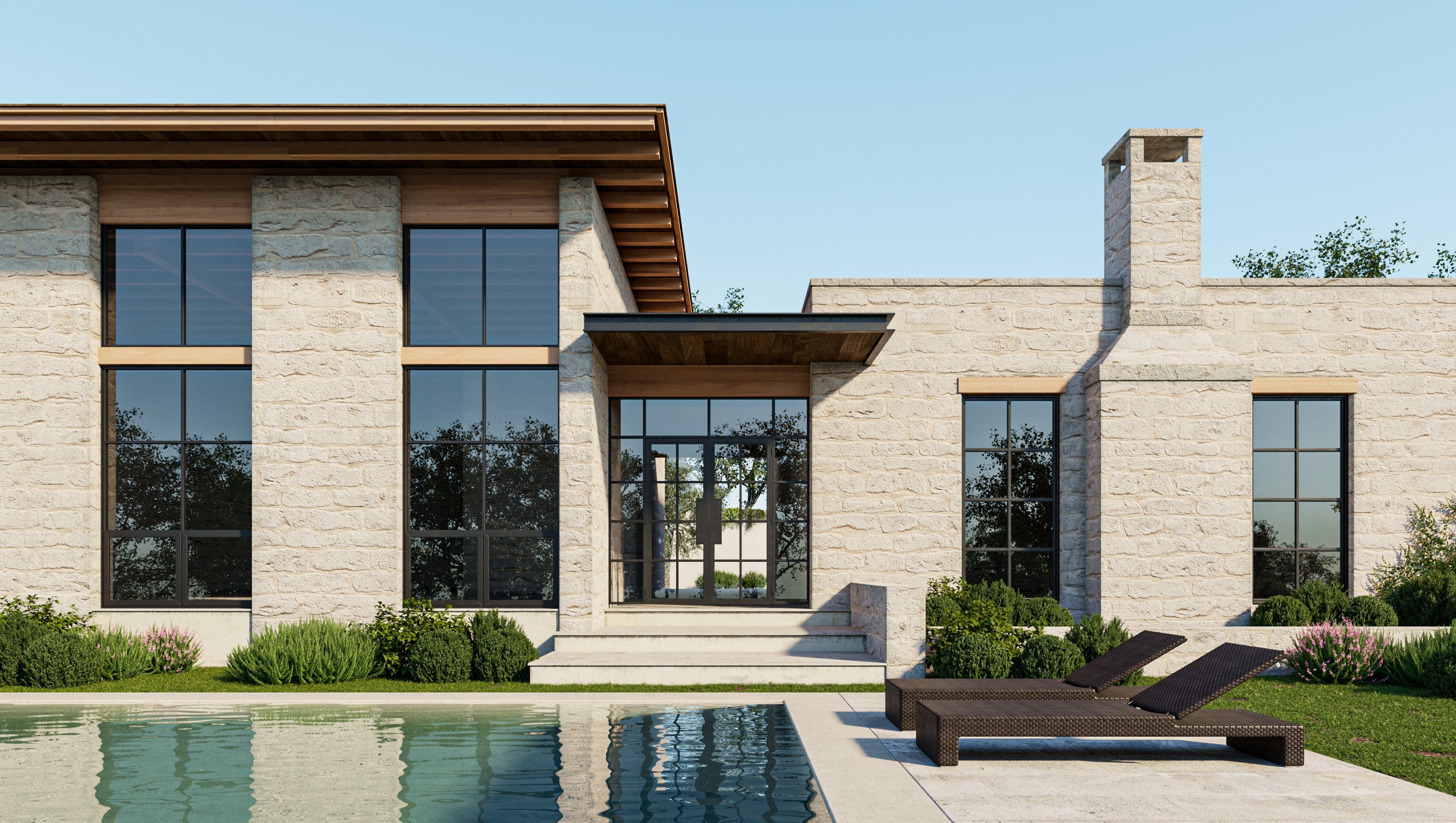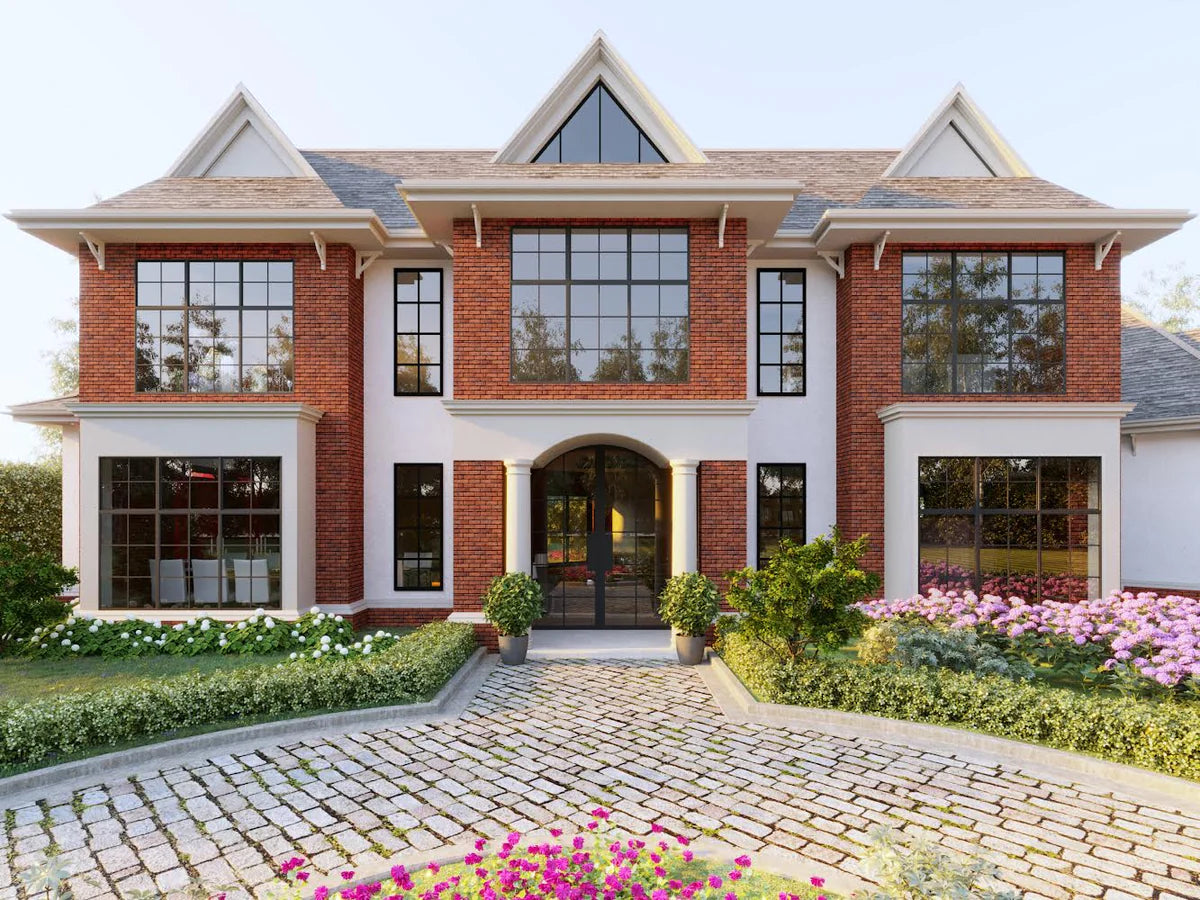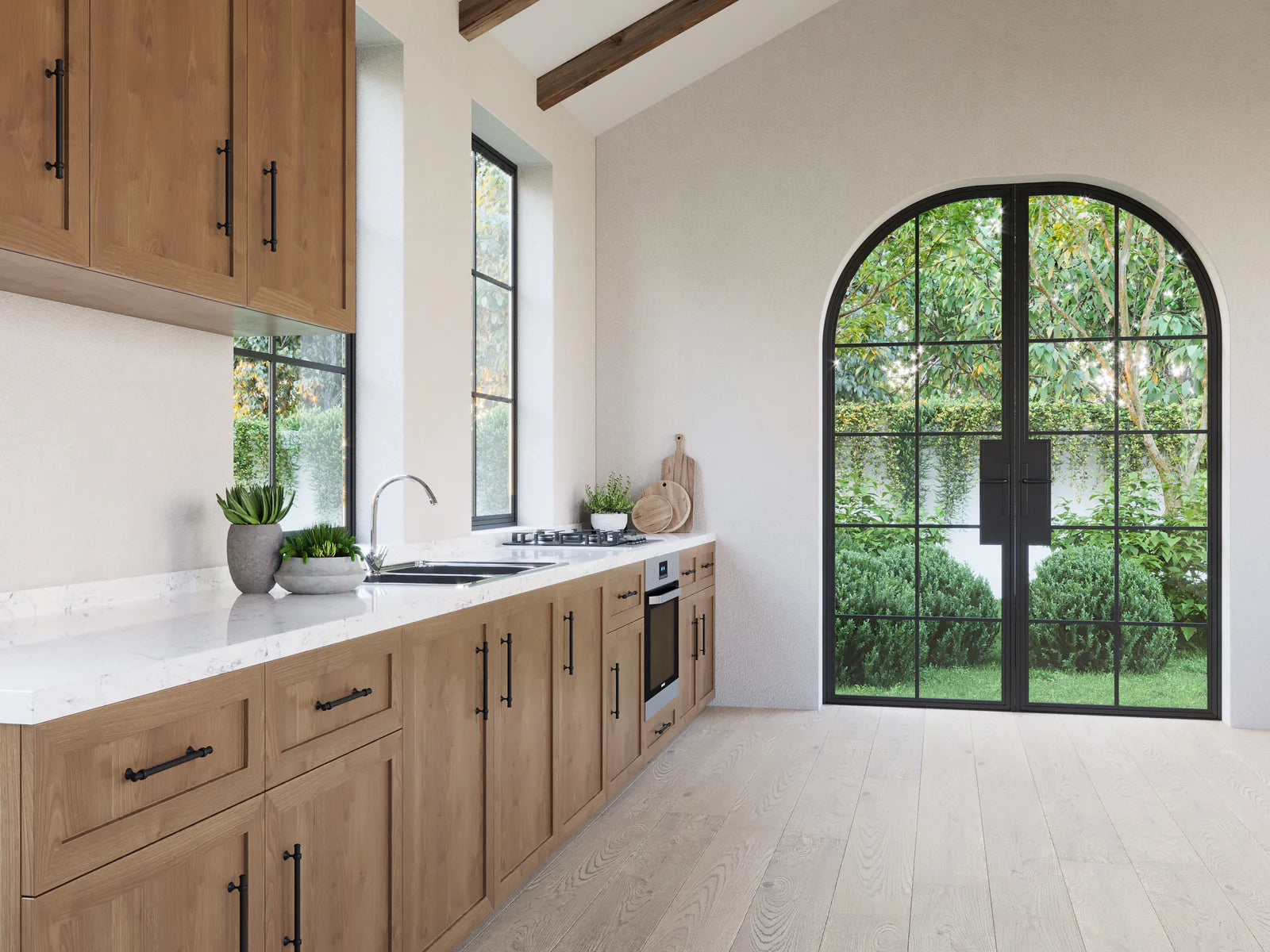
A Guide to the Best Materials for Front Doors
A home's front door is more than just an entrance—it's the first impression that visitors get of your home. Therefore, the material you choose for your front door plays a critical role in your home's overall aesthetic and functionality.
This comprehensive guide explores the best materials for front doors, helping you make an informed decision for your home. So let's delve into the strengths and weaknesses of popular materials to find the best fit for your home.
Wood Front Doors
Wood has long been a favorite material for front doors due to its timeless beauty and versatility. Hardwoods like oak, mahogany, and cherry are common choices for their durability and rich colors.
Benefits of Wood Front Doors
Wood doors offer a classic, warm aesthetic that can be customized to suit any home style. They can be easily painted or stained to achieve a desired look, and if you change your mind in the future, they can be stripped and refinished.
Disadvantages of Wood Front Doors
Despite their undeniable charm, wood doors can be high maintenance. They're susceptible to warping and moisture damage, requiring regular sealing and painting to maintain their appearance. Furthermore, wood doors can be quite heavy, leading to potential sagging over time if not properly supported.
Steel Front Doors
If security and durability are your top priorities, steel might be the best material for your front door. Steel doors provide unbeatable strength, excellent insulation, and are often more affordable than their wood or fiberglass counterparts.
Benefits of Steel Front Doors
Steel doors are highly resistant to warping, cracking, and damage from the elements, making them an excellent option for homes in harsh climates. They can also be painted any color, offering a degree of customization.
Disadvantages of Steel Front Doors
While steel doors offer many benefits, they have a few downsides. Steel can dent, and repairing these dents can be difficult. Additionally, steel doors can rust if not properly primed and painted, requiring some maintenance.
Fiberglass Front Doors
For a balance of beauty, durability, and low maintenance, consider fiberglass. Fiberglass doors can mimic the look of wood while offering superior durability and insulation.
Benefits of Fiberglass Front Doors
Fiberglass doors are resistant to warping, cracking, and damage from weather, making them a long-lasting choice. They come in a variety of finishes, including those that mimic wood grain, and can be painted or stained to match your home's exterior.
Disadvantages of Fiberglass Front Doors
While fiberglass doors are highly durable, they can be more expensive than steel or wood options. Additionally, the material is difficult to trim, which can pose challenges for non-standard doorways.
Aluminum Front Doors
Aluminum doors are another durable and low-maintenance option. They're particularly popular as frames for storm doors or patio doors, thanks to their lightweight and corrosion-resistant properties.
Benefits of Aluminum Front Doors
Aluminum doors resist rust and corrosion better than steel, and they require minimal maintenance. They can also be painted, providing some customization options.
Disadvantages of Aluminum Front Doors
While aluminum doors are durable, they can dent more easily than steel or fiberglass. They're also typically more expensive than steel, but less costly than solid wood doors.
Glass Front Doors
Glass front doors can create a modern, elegant entrance for your home. They allow natural light to flood into your home, creating a bright and welcoming entryway.
Benefits of Glass Front Doors
Glass doors can enhance the aesthetic of your home, particularly if you have a great view. They can also make a small entryway appear larger, as they allow light to flow freely.
Disadvantages of Glass Front Doors
Glass doors provide less privacy and security than other door types. They also tend to be less energy efficient, as they allow more heat transfer than insulated steel or fiberglass doors.
Iron Front Doors
Iron front doors provide a grand entrance to any home, combining timeless elegance with formidable strength. They are a statement of both aesthetic and security.
Benefits of Iron Front Doors
Iron doors are incredibly strong and resistant to force, making them an excellent barrier against intruders. Also they come in various ornate designs and can be customized, adding a luxurious and bespoke element to the façade of a home.
Disadvantages of Iron Front Doors
Iron front doors are typically more expensive than other materials, reflecting their durability and design. Also if not properly coated or maintained, iron can rust over time, particularly in humid or coastal environments.
Comparing Front Door Materials
When choosing the best material for your front door, consider factors such as your home's architecture, your personal style, and your budget. Each material has its unique benefits and drawbacks. For example, wood offers a classic look but requires more maintenance. Steel and Iron provide excellent security but can dent and rust. Fiberglass mimics the look of wood but can be expensive, while glass offers a modern aesthetic but lacks privacy.
Considering Front Door Designs
Once you've chosen the material for your front door, consider the design. Would you like a solid door or one with glass inserts for more light? Do you prefer a traditional, contemporary, or rustic style? Consider also the color or stain, hardware, and any decorative elements like sidelights or transom windows.
Maintaining Your Front Door
Regardless of the material you choose, regular maintenance can extend the lifespan of your front door. This might include cleaning, painting or staining, sealing, and checking the hardware and weatherstripping for signs of wear.
Conclusion
Choosing the best material for a front door involves balancing aesthetic preferences, durability, maintenance requirements, and cost. While there's no one-size-fits-all answer, understanding the pros and cons of each material can help you make an informed decision.
Whether you choose a classic wood door, a sturdy steel door, a low-maintenance fiberglass door, or a modern glass door, the right choice will enhance your home's curb appeal, security, and energy efficiency.
If you ever need assistance selecting the perfect front door, don't hesitate to reach out to Black Badge Doors. They can provide valuable guidance to help you make the best decision for choosing a door.



